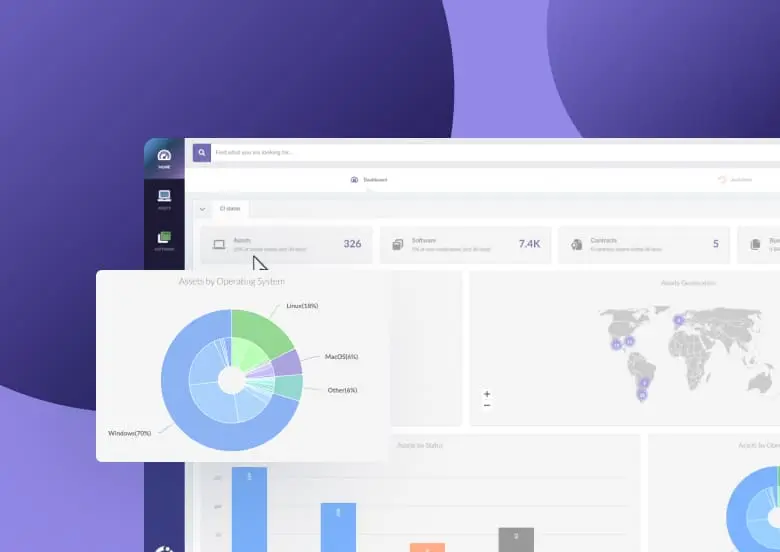Organizational Change Management is a crucial process that helps businesses navigate transitions and adapt to new circumstances. As organizations evolve, they often face the challenge of implementing changes that can significantly impact their operations, culture, and overall success.
This article will explore the ins and outs of effective Organizational Change Management, providing insights and strategies that can help your organization thrive during times of change.
Whether you are a seasoned change manager or just starting to explore the world of organizational change, this guide will offer valuable information to enhance your understanding and skills.
So, grab a cup of coffee, get comfortable, and let's dive into the fascinating world of Organizational Change Management!
What is Organizational Change Management?
Organizational Change Management refers to the structured approach used to ensure that changes within an organization are implemented smoothly and successfully.
This process involves managing change by preparing, supporting, and helping individuals and teams to adopt new methods, technologies, or strategies that align with the organization’s goals financial objectives.

Change Enablement vs. Change Management: What's the Difference?
What causes organizational change?
Organizational change can be triggered by a variety of factors, both internal and external. External factors include changes in the market, such as new competitors or shifts in customer preferences, as well as technological advancements, regulatory changes, or economic conditions. Internal factors, on the other hand, may include changes in leadership, the need to improve efficiency or productivity, or the desire to adapt to changing employee needs or expectations.
Another common cause of organizational change is the need to respond to crisis situations, such as a natural disaster, a data breach, or a global pandemic. In these cases, organizations must act quickly to adapt to the new circumstances and ensure business continuity.
Regardless of the cause, organizational change is a necessary and ongoing process that helps organizations remain competitive and responsive to the ever-changing business environment.
The importance of Organizational Change Management
Understanding the significance of effective Organizational Change Management is essential for any organization looking to succeed. Here are some key points to consider:
-
Adaptability: Organizations that manage change effectively are more adaptable to market shifts and internal challenges.
-
Employee engagement: A well-executed Organizational Change Management strategy fosters employee engagement and acceptance, reducing resistance to change.
-
Business continuity: Effective change management ensures that business processes continue to function smoothly during transitions.
-
Competitive advantage: Organizations that embrace change can leverage it to gain a competitive edge over their rivals.

A Complete Guide to Change Management Software + Top Picks
Types of organizational Change Management
Understanding the different types of organizational change is vital for developing an effective change management strategy. Each type presents unique challenges and requires tailored approaches.
1. Adaptive Change Management
Adaptive changes are small, incremental adjustments that organizations make to improve processes or respond to minor shifts in the environment. Examples include:
-
Upgrading software systems.
-
Modifying workflows.
-
Adjusting team structures.
2. Transformational Change Management
Transformational changes are larger in scope and often involve a significant shift in the organization’s mission, culture, or operations. These changes can be triggered by external factors such as market disruptions or internal factors like leadership changes, aiming to break down the existing status quo and establish a new one. Examples include:
-
Merging with another company.
-
Implementing new technologies across the organization.
-
Redefining the company’s strategic direction.
3. Process-oriented Change Management
Process-oriented organizational changes often focus on improving or replacing existing workflows, procedures, and systems within an organization. These changes aim to enhance efficiency, productivity, and quality. Examples include:
-
Implementing a new project management software.
-
Streamlining the procurement process.
-
Automating repetitive tasks.
Process-oriented changes often involve the adoption of new technologies and require employee training to ensure successful change implementation.
4. Cultural Change Management
Cultural change aims to shift the organization's values, beliefs, and behaviors. This type of change is often driven by the need to adapt to new market conditions, foster innovation, or improve employee engagement. Examples include:
-
Promoting a more collaborative work environment
-
Encouraging risk-taking and experimentation
-
Implementing diversity and inclusion initiatives
Cultural change can be challenging as it requires a deep-rooted shift in mindsets and habits. Effective communication, leadership support, and employee engagement are crucial for successful cultural change.
5. Technological Change Management
Technological change involves the introduction of new technologies or the upgrade of existing systems. This type of change aims to improve efficiency, productivity, and competitiveness. Examples include:
-
Migrating to a cloud-based infrastructure
-
Implementing an enterprise resource planning (ERP) system
-
Adopting Artificial Intelligence (AI) and Machine Learning (ML) technologies
Technological change often requires significant investment, employee training, and change management strategies to ensure a smooth transition and maximize the benefits of the new technology.
Transformational change vs. incremental change
When it comes to organizational change, there are two main approaches: transformational change and incremental change. Transformational change involves a significant shift in an organization's strategy, structure, or culture, often resulting in a complete overhaul of the way the organization operates.
This type of change is typically driven by external factors, such as market disruptions or technological advancements, and can have a profound and significant impact on the organization's future.
In contrast, incremental change is a more gradual and iterative approach to change management. It involves making small, continuous improvements to existing processes and systems, rather than implementing a single, large-scale change. Incremental change is often used to adapt to changing market conditions or to improve efficiency and productivity over time.
While both transformational and incremental change have their advantages, the choice of approach depends on the specific needs and goals of the organization.
In some cases, a combination of both approaches may be necessary to achieve the desired outcomes.
Examples of Each Type of Organizational Change
Understanding the various types of organizational change is essential, but seeing real-world examples can bring these concepts to life. Here are examples for each type of successful organizational change discussed earlier:
Example 1: Adaptive Change Management
Adaptive changes are often small, incremental adjustments made in response to evolving circumstances. For instance, a retail company may decide to modify its Inventory Management system to better align with customer buying patterns.
By implementing a just-in-time inventory approach, the company can reduce excess stock and improve cash flow. Another example could be a tech firm updating its software tools to enhance collaboration among remote teams, ensuring that employees have the latest features to work efficiently.
Example 2: Transformational Change Management
Transformational change can be seen in companies that undergo significant shifts in their business model or culture. A classic example is Netflix, which transitioned from a DVD rental service to a leading streaming platform.
This transformation not only involved changes in technology but also required a cultural shift towards innovation and risk-taking. Another example is Microsoft’s shift under CEO Satya Nadella, who emphasized a growth mindset and collaboration, transforming the company’s culture and approach to business.
Example 3: Process-oriented Change Management
Process-oriented changes focus on improving existing workflows. For example, a manufacturing company might implement lean manufacturing principles to minimize waste and optimize production efficiency.
This could involve re-engineering the assembly line to reduce bottlenecks and enhance productivity. Another example is a financial institution adopting a new customer relationship management (CRM) system to streamline client interactions and improve service delivery.
Example 4: Cultural Change Management
Cultural change often requires a deep commitment from leadership to foster a new environment. For instance, Google has made significant efforts to promote a culture of innovation and inclusivity, encouraging employees to share ideas and take risks.
This cultural shift has been instrumental in maintaining its competitive edge. Another example is Starbucks, which has focused on creating a culture of community and social responsibility, influencing its business practices and customer engagement strategies.
Example 5: Technological Change Management
Technological change is prevalent in organizations that need to keep pace with rapid advancements. For example, a healthcare provider might implement electronic health records (EHR) systems to improve patient care and streamline operations.
This change not only enhances efficiency but also ensures compliance with regulatory standards. Another example is a manufacturing company adopting robotics and automation to improve precision and reduce labor costs, significantly transforming its production capabilities.
By examining these examples, organizations can better make change happen and understand how different types of change manifest in real-world scenarios, providing valuable insights for their own change management initiatives.

14 Steps for a Solid Digital Transformation Strategy in 2024
The process for an effective Organizational Change Management
A systematic approach to managing organizational change can enhance the likelihood of successful outcomes. The change management process typically involves three major phases: preparation, implementation, and follow-through.
1. Preparation phase
In the preparation phase, organizations lay the groundwork for change. This involves:
-
Identifying the need for change: Understanding why change is necessary and what goals it aims to achieve.
-
Engaging key stakeholders: Involving executives, managers, and employees to gather input and build support for the change initiative.
-
Assessing current processes: Evaluating existing workflows and identifying areas that require improvement.
2. Implementation phase
The implementation phase is where the actual changes take place. Key activities include:
-
Communicating the change: Clearly conveying the reasons for the change and its benefits to all employees.
-
Training and support: Providing necessary training and resources to help employees adapt to new processes or technologies.
-
Monitoring progress: Tracking the implementation process to identify any challenges or areas that need adjustment.
3. Follow-through phase
The follow-through phase ensures that the changes are sustained over time. This involves:
-
Evaluating outcomes: Assessing whether the change met its intended goals and identifying lessons learned.
-
Celebrating successes: Recognizing and rewarding individuals and teams who contributed to the successful implementation of change.
-
Continuous improvement: Using feedback to refine processes and prepare for future changes.

How to Build a Change Management Workflow
Organizational Change Management Tools
To facilitate the Organizational Change Management process, using the right tools is an additional aspect to consider for its three phases: preparation, implementation, and follow-up.
- Analysis tools: Assessing the effects of change in different areas of the organization (Impact Matrix), identifying the stakeholders, and conducting a SWOT analysis, which examines the strengths, weaknesses, opportunities, and threats associated with the transformation.
- Organizational culture analysis tools: Documenting the current and future states, post-change, through a series of surveys with the involved individuals.
- Communication tools: Using a unified platform within the organization to disseminate the reasons and new tasks associated with the process.
- Training tools: Workshops and meetings will serve as spaces for staff who need to acquire the knowledge to adapt to the change. These spaces will also be useful for gathering feedback on the procedure.
- Planning tools: Creating a plan that outlines the objectives, tasks, resources, and deadlines.
- Resistance Management tools: Surveys and questionnaires will be used to identify employees' concerns and attitudes towards the change.
- Monitoring tools: Using pre-defined KPIs to evaluate the success of the process and make necessary improvements.
Key change management skills
Successful change management requires a diverse set of skills. Here are some essential skills that change managers should develop:
1. Communication skills
Effective communication is critical during organizational change. Change managers must be able to convey information clearly and persuasively to engage employees and stakeholders.
2. Leadership skills
Strong leadership is essential for guiding teams through change. Change managers and executive leaders should inspire confidence and motivate employees to embrace new initiatives.
3. Problem-solving skills
Change often brings unexpected challenges. Change managers need to be adept at identifying problems and developing solutions quickly.
4. Emotional intelligence
Understanding and addressing the emotional responses of employees during change is vital. Change managers should demonstrate empathy and support to help individuals navigate transitions.

What is a Change Manager? Responsibilities and Skills
Engaging employees in organizational change initiatives
Gaining acceptance from the entire organization, including leadership, upper management, executives, and employees, is crucial for the success of any change initiative. Here are some strategies to engage employees effectively:
1. Involve employees early
Involving employees in the change process from the beginning fosters a sense of ownership and commitment. This can be achieved through:
-
Feedback sessions: Gathering input on proposed changes to address concerns and suggestions.
-
Pilot programs: Testing changes with a small group of employees before a full rollout.
2. Communicate transparently
Open and honest communication helps build trust and reduces uncertainty. Key practices include:
-
Regular updates: Keeping employees informed about the progress of change initiatives.
-
Addressing concerns: Providing a platform for employees to voice their concerns and receive timely responses.
3. Provide training and resources
Offering training and resources ensures that employees feel equipped to handle changes. This can include:
-
Workshops: Conducting training sessions to familiarize employees with new processes or technologies.
-
Support resources: Providing access to online resources or support teams to assist employees during the transition.
4. Measuring success in organizational change management
To determine the effectiveness of change initiatives, organizations should establish key performance indicators (KPIs). Here are some common KPIs to consider:
5. Employee satisfaction surveys
Conducting surveys can help gauge employee sentiment regarding the change process and identify areas for improvement.
6. Performance metrics
Tracking performance metrics can reveal whether the change has led to desired outcomes, such as increased productivity or improved customer satisfaction.
7. Adoption rates
Measuring the rate at which organizational leaders and employees adopt new processes or technologies can indicate the success of change initiatives.
What is the manager's role in organizational Change Management?
Managers play a critical role in the success of organizational change initiatives. As leaders, they are responsible for communicating the vision for change, engaging employees, and providing the necessary resources and support to ensure a smooth transition.
One of the key responsibilities of managers in organizational change management is to create a sense of urgency around the need for change. This involves clearly articulating the reasons for the change, the potential benefits, and the consequences of not changing. By fostering a shared understanding of the importance of change, managers can build support and commitment among employees.
Another important aspect of the manager's role is to provide ongoing support and guidance to employees throughout the change process. This may involve providing training and resources, addressing concerns and questions, and celebrating successes along the way. By demonstrating empathy and understanding, managers can help employees navigate the emotional challenges that often come with change.
Finally, managers must be willing to adapt their own leadership style and approach to support the change initiative. This may involve being more flexible, collaborative, and open to new ideas, or taking a more directive approach when necessary. By modeling the behaviors and attitudes they want to see in their teams, managers can inspire confidence and commitment to the change process.
Human Centered Leadership
Discover the power of embracing the human element in IT and leadership
Download for free
Conclusion
Organizational Change Management is a vital component of any successful business strategy. By understanding the types of change, following a structured process, and engaging employees effectively, organizations can navigate transitions with confidence. Remember, change is not just about implementing new processes; it's about fostering a culture that embraces growth and adaptability.
As you embark on your journey of managing organizational change, keep these strategies in mind to enhance your effectiveness and drive successful outcomes.
FAQs
1. What is Organizational Change Management?
Organizational Change Management is the process of guiding an organization through transitions to ensure that changes are implemented smoothly and effectively.
2. Why is Organizational Change Management important?
Effective Organizational Change Management is crucial for maintaining employee engagement, ensuring business continuity, and gaining a competitive advantage during transitions.
3. What are the types of organizational change?
Organizational change can be categorized into adaptive changes, which are incremental adjustments, and transformational changes, which involve significant shifts in strategy or operations.
4. How can organizations measure the success of change initiatives?
Organizations can measure success through employee satisfaction surveys, performance metrics, and adoption rates of new processes or technologies.















